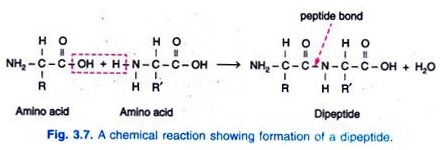The below mentioned article provides a short note on Ascaris Lumbricoides (Round Worm).
Morphology of Ascaris Lumbricoides (Round Worm):
The adult worm is the largest (20-35 cm) of the common intestinal nematodes of man. It is bright or pink in colour (Fig. 109.36, 37, 38, 39, 40). The posterior end of male is curved ventrally (Fig. 109.41, 42) with a pair of copulatory spicules without gubernaculum. The female has a vulvar waist situated mid-ventrally [Fig. 109.36, 36(a)],
Life Cycle of Ascaris Lumbricoides (Round Worm):
When fully embryonated or fertilised eggs (Fig. 109.43) are ingested by man, their shells are digested by the digestive juice, the rhabditiform larvae (embryos) are liberated, penetrate into the intestinal wall, carried in the blood stream and break-through the pulmonary capillaries into the alveoli.
These larvae crawl up the bronchioles, epiglottis and are swallowed. In the intestine, they develop into adult worms, the female is fertilised and lays both fertilised and unfertilized eggs (Fig. 109.43, 44).
Clinical Features of Ascaris Lumbricoides (Round Worm):
The most common symptoms are vague abdominal discomfort, acute colicky pain in the epigastric region, poor digestion, diarrhoea and fever. The wandering worms may cause symptoms like acute appendicitis, gastric or duodenal trauma, oesophageal perforation, severe involvement of the genito-urinary tract of males and females; and invasion of the heart.
Moreover, the larvae which migrate through the capillaries of the brain and eyeball may produce symptoms of meningitis, epilepsy, retinitis and palpebral oedema.
Laboratory Diagnosis:
(a) Detection of adult worm in stool or vomit;
(b) Demonstration of characteristic egg in the stool
(c) The Scratch test or skin test may be found positive and the results are variable.
Anterior end (Fig. 109.38, 39); lips (Fig. 109.40), posterior end of female adult [Fig. 109.36(a)] are to be identified.
Treatment of Ascaris Lumbricoides (Round Worm):
Piperazine (citrate, phosphate), thiobendazole, and mebendazole are very effective.
Prophylaxis:
Proper disposal of human excreta, treatment of infected individuals, educating children about sanitation and hygiene and avoidance of raw vegetables, food or drink contaminated with the faeces of infected persons.

